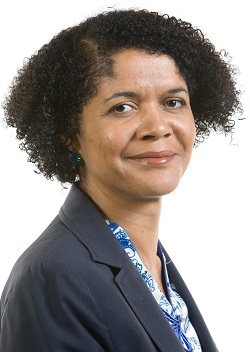We are delighted to present the next instalment of Gender + from guest blogger Deborah Husbands, Doctoral Researcher and Senior Lecturer in the Department of Psychology at the University of Westminster, London.
Intersectionality Finally Comes of Age
With glass in hand, I sit at my desk and reflect on a question posed recently by author and coach, Cherron Inko-Tariah, MBE: how can we bridge the diversity-inclusion gap? How can we, indeed? For a gap certainly exists. But let’s first unpack that word ‘diversity’ a little. Philosopher Nathaniel Coleman once said that diversity is a ‘dirty word’ that allows people to hide behind the real issues because it conveniently blurs the lines. Issues that lie deep within complexities from multiple identities in a fragmented world remain safely hidden under a diversity veil. But, there is fresh hope for clarity! Along comes a plethora of research at just the right time. Waving an ‘intersectionality’ banner, our attention is drawn to a new framework to dissect, particularise and understand these multiple identities. In other words, we are now equipped to bridge the gap. Yet, intersectionality is not new.
Intersectionality existed long before we were given the term in the late 1980s by feminist, critical race theorist and legal scholar, Kimberlé Crenshaw. In fact, it’s the way we have always experienced our life-worlds: as compartmentalised and disaggregated, as individualised and collectivistic, as unique and universal—all at the same time.

So, why has ‘intersectionality’ become so fashionable of late? Maybe, because it has divested itself of a ‘childish’ impulse for tunnel-vision and egocentrism characteristic of other frameworks. It has learnt to share its toys: new knowledge and ideas about the multiplicative (not additive) nature of identity. And, at last, it is dressed and ready for the ball, complete with an eclectic assortment of global escorts: gendered and racialised people, neglected feminists, structurally-dominated and politically-oppressed people. But what do we do with them all when they get there, asks the party-going newly-gentrified and socially-privileged among us? The answer, it seems, is that we research and study them to death as if they were, as Professor Gurnam Singh aptly puts it, the ‘exotic animal in the room’. And when we think we’ve ‘done enough’, we put them back into their compartmentalised world until a new social justice paradigm emerges that justifies taking them back out again. Only maybe, this time, using a different critical lens.
The world will likely be a much better place when diversity, inclusion and intersectionality go the way of the record player or tape recorder: as a vintage item that has long since served its purpose.
But until then, it seems we still have some work to do.


